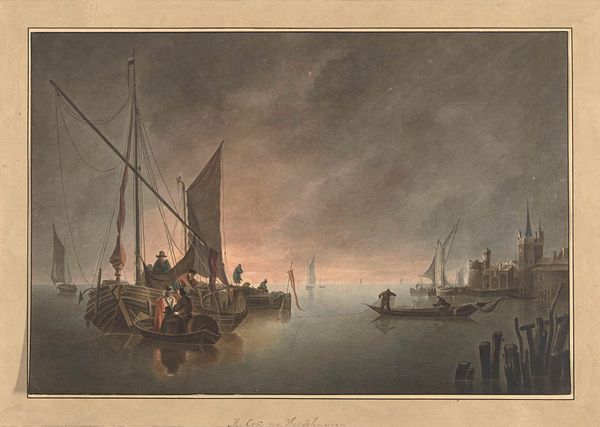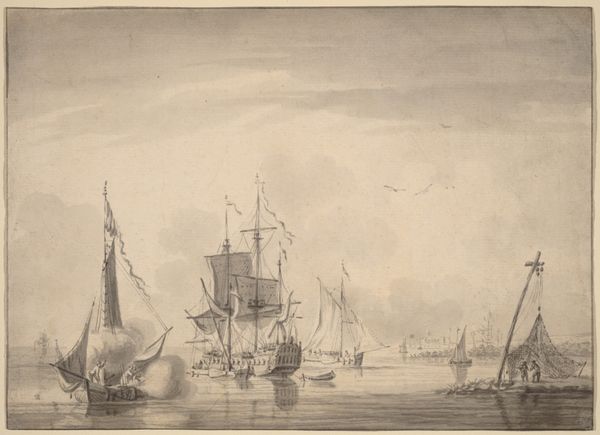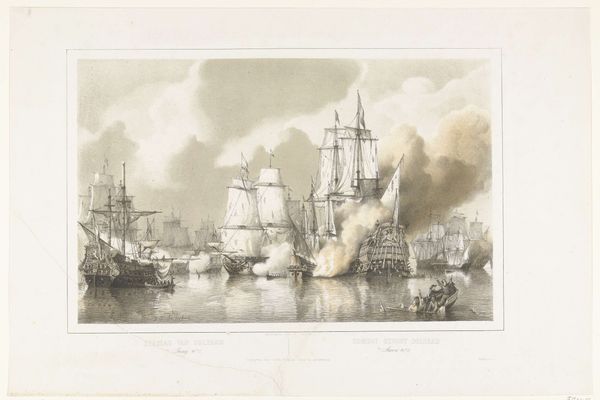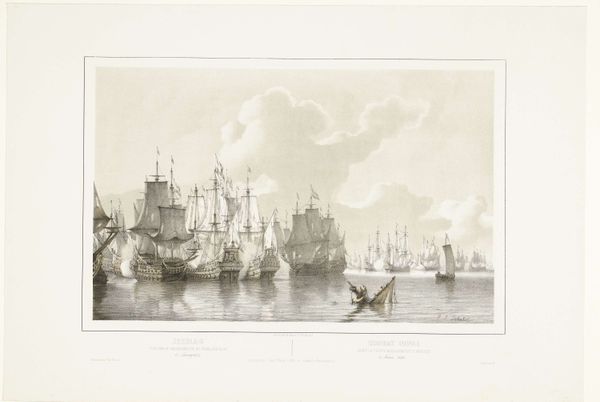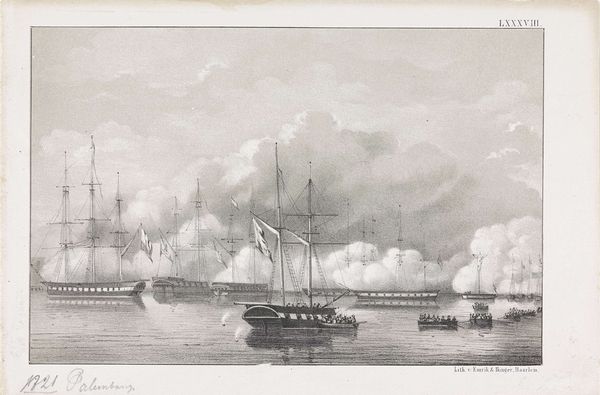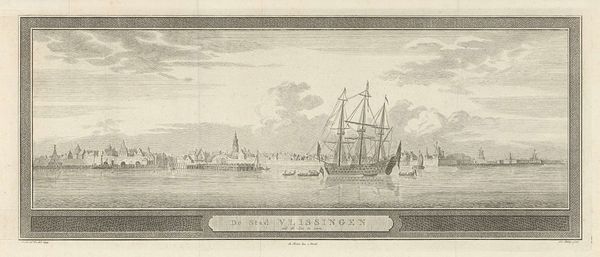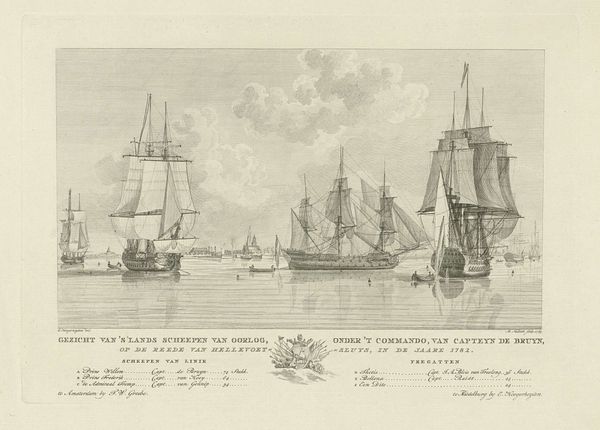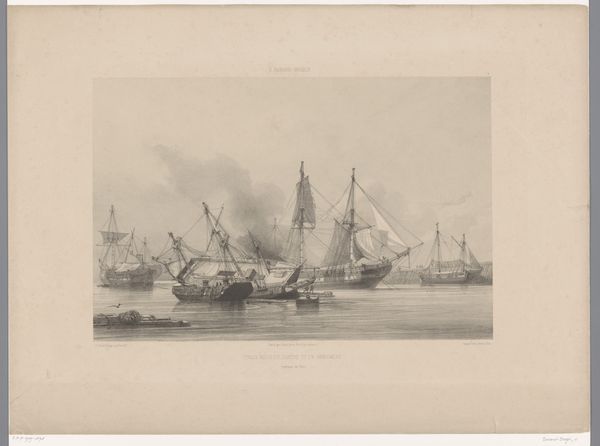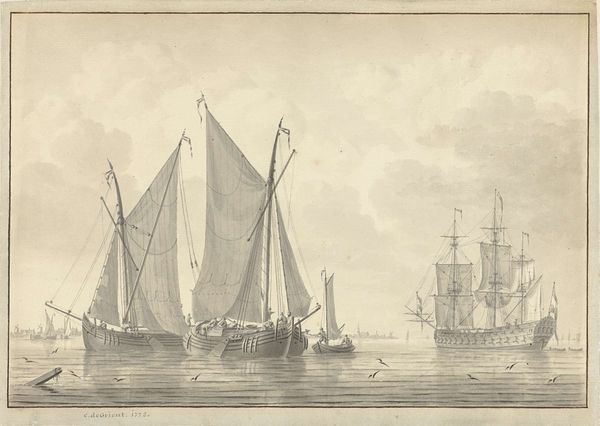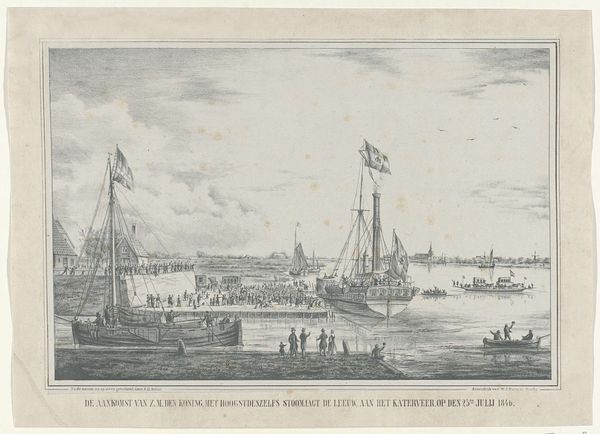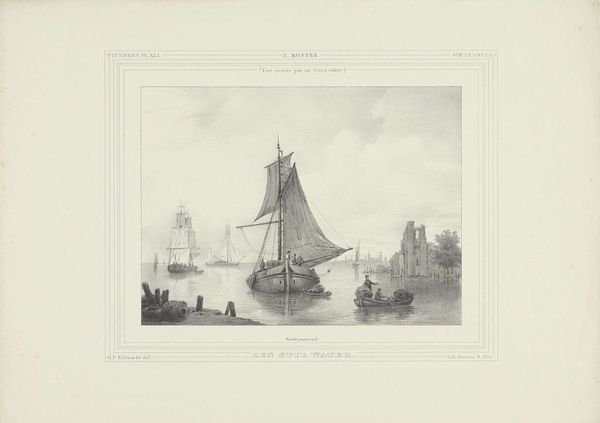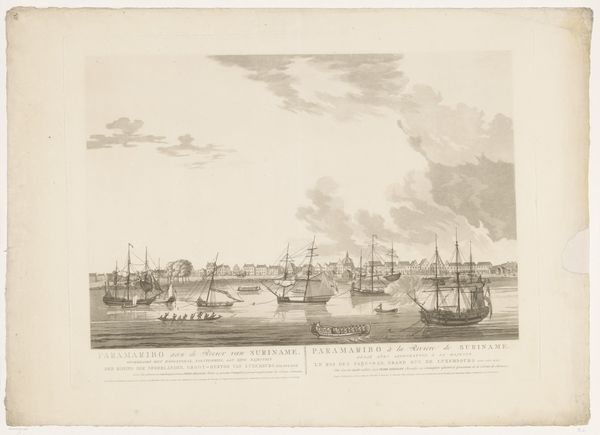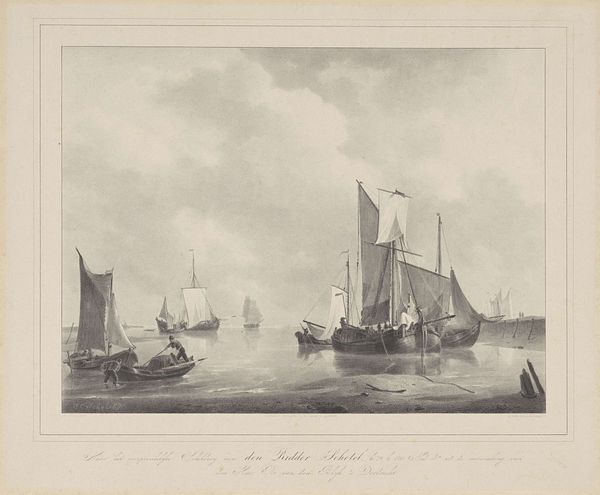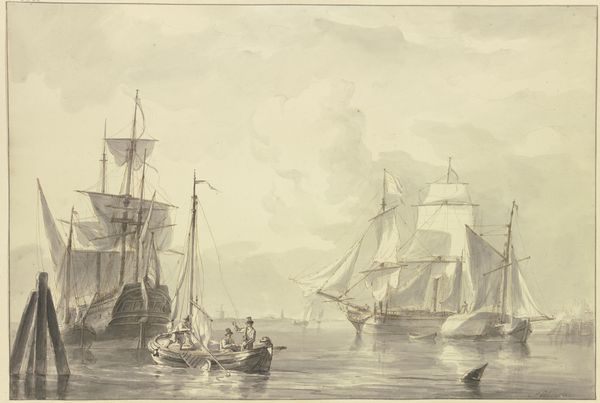
De eerste Wedstrijd der Koninklijke Nederlandsche Yacht-Club, gehouden den 10 Sept.r 1846 op het IJ te Amsterdam 1846
0:00
0:00
print, etching
#
dutch-golden-age
# print
#
etching
#
landscape
#
romanticism
#
genre-painting
#
realism
Dimensions: height 408 mm, width 592 mm
Copyright: Rijks Museum: Open Domain
Curator: Let's talk about this print by Frans Arnold Breuhaus de Groot, "The first Competition of the Royal Dutch Yacht Club, held on September 10, 1846 on the IJ in Amsterdam," currently held at the Rijksmuseum. It's an etching from 1846. Editor: It’s a detailed depiction of a regatta! There’s so much activity depicted, from the yachts to the spectators along the shore, but there's almost an equal weight given to sky as to the water activities. What are you focusing on when you look at this work? Curator: For me, it's fascinating to consider the material conditions surrounding this event. It's a depiction of leisure, yes, but whose leisure? Etchings like these were commodities. They document and, importantly, disseminate an image of burgeoning Dutch industry and recreation amongst a certain social class. Consider the labour involved in both the yacht building itself, a booming industry then, and the production of this etching; the division of labor to create and then purchase it, says so much. Don't you agree? Editor: That makes me look at the print differently. I hadn’t thought about the social and economic context of its creation and consumption. Were these kinds of prints common ways to disseminate information or commemorate events? Curator: Absolutely. And look at the meticulous detail Breuhaus de Groot employs in etching the sails and the water. The labor involved speaks volumes about the value placed on such scenes of recreation, suggesting how emerging social classes wanted to be viewed and consumed by the world around them, much like people use social media today. What details strike you, now thinking of labour? Editor: I'm drawn to the way the architecture is rendered in relation to the water, so clearly illustrating leisure versus industry in that moment. It shows the material prosperity and social structures that were developing at the time. I appreciate seeing that perspective. Curator: Precisely! And through that lens, even a seemingly simple scene of boats on water becomes a window into the complex social and economic landscape of 19th-century Netherlands.
Comments
No comments
Be the first to comment and join the conversation on the ultimate creative platform.
